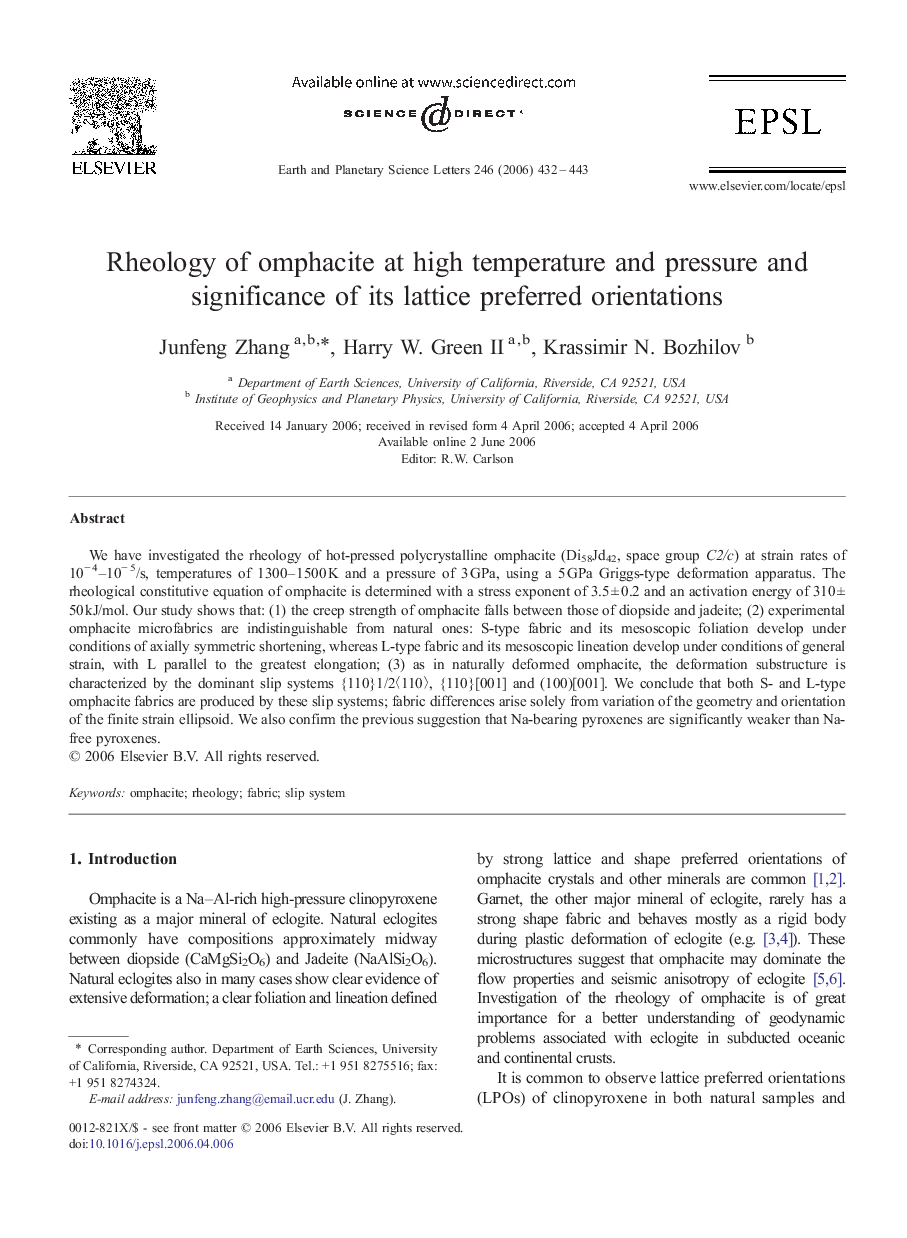| Article ID | Journal | Published Year | Pages | File Type |
|---|---|---|---|---|
| 4680956 | Earth and Planetary Science Letters | 2006 | 12 Pages |
We have investigated the rheology of hot-pressed polycrystalline omphacite (Di58Jd42, space group C2/c) at strain rates of 10− 4–10− 5/s, temperatures of 1300–1500 K and a pressure of 3 GPa, using a 5 GPa Griggs-type deformation apparatus. The rheological constitutive equation of omphacite is determined with a stress exponent of 3.5 ± 0.2 and an activation energy of 310 ± 50 kJ/mol. Our study shows that: (1) the creep strength of omphacite falls between those of diopside and jadeite; (2) experimental omphacite microfabrics are indistinguishable from natural ones: S-type fabric and its mesoscopic foliation develop under conditions of axially symmetric shortening, whereas L-type fabric and its mesoscopic lineation develop under conditions of general strain, with L parallel to the greatest elongation; (3) as in naturally deformed omphacite, the deformation substructure is characterized by the dominant slip systems {110}1/2〈110〉, {110}[001] and (100)[001]. We conclude that both S- and L-type omphacite fabrics are produced by these slip systems; fabric differences arise solely from variation of the geometry and orientation of the finite strain ellipsoid. We also confirm the previous suggestion that Na-bearing pyroxenes are significantly weaker than Na-free pyroxenes.
